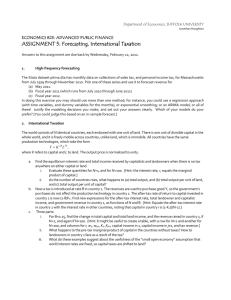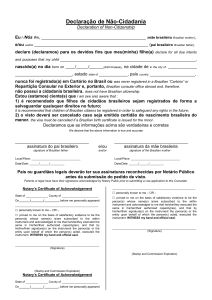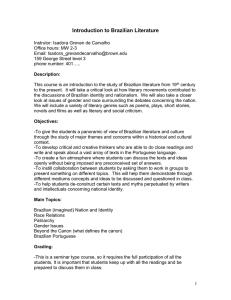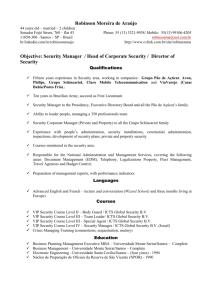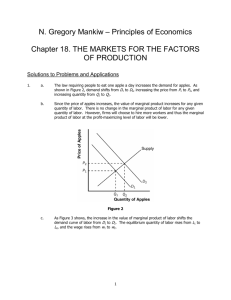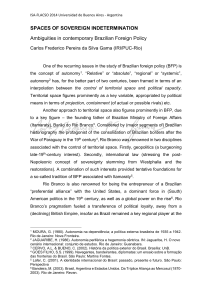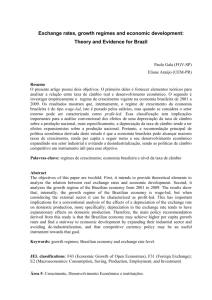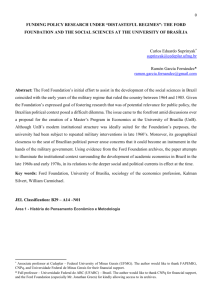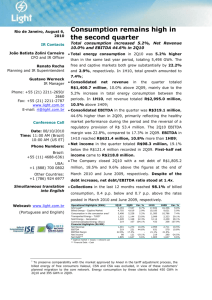Chapter 7 exercises 1, 2 and 6
advertisement
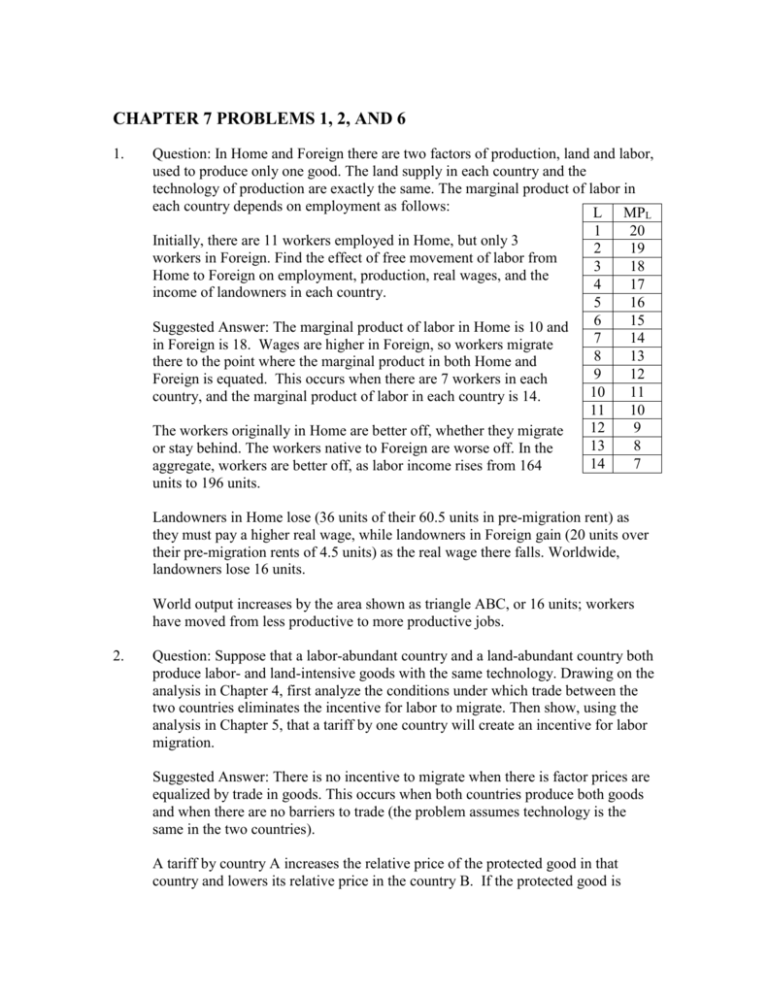
CHAPTER 7 PROBLEMS 1, 2, AND 6 1. Question: In Home and Foreign there are two factors of production, land and labor, used to produce only one good. The land supply in each country and the technology of production are exactly the same. The marginal product of labor in each country depends on employment as follows: L MP L Initially, there are 11 workers employed in Home, but only 3 workers in Foreign. Find the effect of free movement of labor from Home to Foreign on employment, production, real wages, and the income of landowners in each country. Suggested Answer: The marginal product of labor in Home is 10 and in Foreign is 18. Wages are higher in Foreign, so workers migrate there to the point where the marginal product in both Home and Foreign is equated. This occurs when there are 7 workers in each country, and the marginal product of labor in each country is 14. The workers originally in Home are better off, whether they migrate or stay behind. The workers native to Foreign are worse off. In the aggregate, workers are better off, as labor income rises from 164 units to 196 units. 1 2 3 4 5 6 7 8 9 10 11 12 13 14 20 19 18 17 16 15 14 13 12 11 10 9 8 7 Landowners in Home lose (36 units of their 60.5 units in pre-migration rent) as they must pay a higher real wage, while landowners in Foreign gain (20 units over their pre-migration rents of 4.5 units) as the real wage there falls. Worldwide, landowners lose 16 units. World output increases by the area shown as triangle ABC, or 16 units; workers have moved from less productive to more productive jobs. 2. Question: Suppose that a labor-abundant country and a land-abundant country both produce labor- and land-intensive goods with the same technology. Drawing on the analysis in Chapter 4, first analyze the conditions under which trade between the two countries eliminates the incentive for labor to migrate. Then show, using the analysis in Chapter 5, that a tariff by one country will create an incentive for labor migration. Suggested Answer: There is no incentive to migrate when there is factor prices are equalized by trade in goods. This occurs when both countries produce both goods and when there are no barriers to trade (the problem assumes technology is the same in the two countries). A tariff by country A increases the relative price of the protected good in that country and lowers its relative price in the country B. If the protected good is labor intensive, then the demand for labor in country A rises, and the return to labor rises proportionately more. The opposite occurs in country B, where the lower world price of their labor-intensive export causes a magnified decrease in their real wage. These results follow from the Stolper-Samuelson theorem, which states that an increase in the price of a good raises the return to its intensive factor by more than the price increase. These international wage differentials induce migration from country B to country A. 6. Question: The Karma Computer Company has decided to open a Brazilian subsidiary. Brazilian import restrictions have prevented the firm from selling into that market, while the firm has been unwilling to sell or lease its patents to Brazilian firms because it fears that this will eventually hurt its technological advantage in the US market. Analyze Karma’s decision in terms of the theory of multinational enterprise. Suggested answer: In terms of location, the Karma company has avoided Brazilian import restrictions by opening its Brazilian subsidiary. In terms of internalization, the firm has retained its control over the technology by not divulging its patents.



